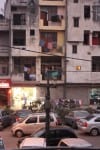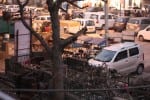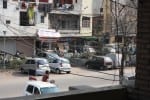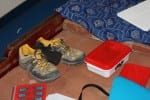On Thursday, as part of my orientation, I was for the first time taken into the field. Here I was meant to get introduced to two of the programmes run by Chintan (see previous post), namely ‘A Voice For Waste’ and ‘No Child in Trash’. In order to get to the right place, we set off with a bus. Now, taking a bus here in Delhi is quite an experience. Even though the bus did stop at the stop where it was meant to let us in, the driver did not bother changing lanes. So, in order to get into the bus we had to cross one busy lane of an even busier four-lane road. The bus just stood waiting in the middle of the road to let the passengers in. After we managed to get into the bus, I sat down and the bus drove off only to make a somewhat indelicate emergency (I guess) stop. This almost threw one of my co-workers from one end of the bus to the other. Fortunately she managed to find hold on one of the seats and a few hands grabbed her so she did not summersault through the bus. About a quarter of an hour into our journey, the bus stopped, seemingly for no reason and the bus driver decided to go for a leisurely walk. It took me a minute to realise that we were on a “pee-break”… in other words 30 passengers watched and waited as the bus driver satisfied one of his basic needs.
Apart from that the journey went well. We were heading to a site in the West of Delhi. On our way we drove past the (heavily gated) Commonwealth Village were all the athletes of last year’s Commonwealth Games had been accommodated for. The village is located next to a beautiful old temple (and yes I’ve forgotten its name :-s ). What was really striking was that between the Commonwealth Village and the temple people were living in shanties. The government’s solution to this ‘unpleasant sight’ seems to be to just build a wall around this area. Apparently this is now a very common strategy… there is just no space to resettle people anymore here in Delhi.
Eventually we reached our destination (well we first had to cross the road i.e. four lanes of heavy traffic). I was taken into a quarter where there are a lot of scrap dealers. I was told that here was one of two schools that Chintan had opened for waste picker children and that we’d visit on that day. We wandered through a narrow passage between two brick built houses. It took us to some sort of a back yard, which had been transformed into a stable where two beasts were living (i.e. feeding, sleeping… and digesting). They stood in the yard under a tarpaulin that now functions as their shelter. In fact, their old stable has been transformed into two classrooms accommodating a class each. I hope the pictures will give you a rough idea about what the place looks like.
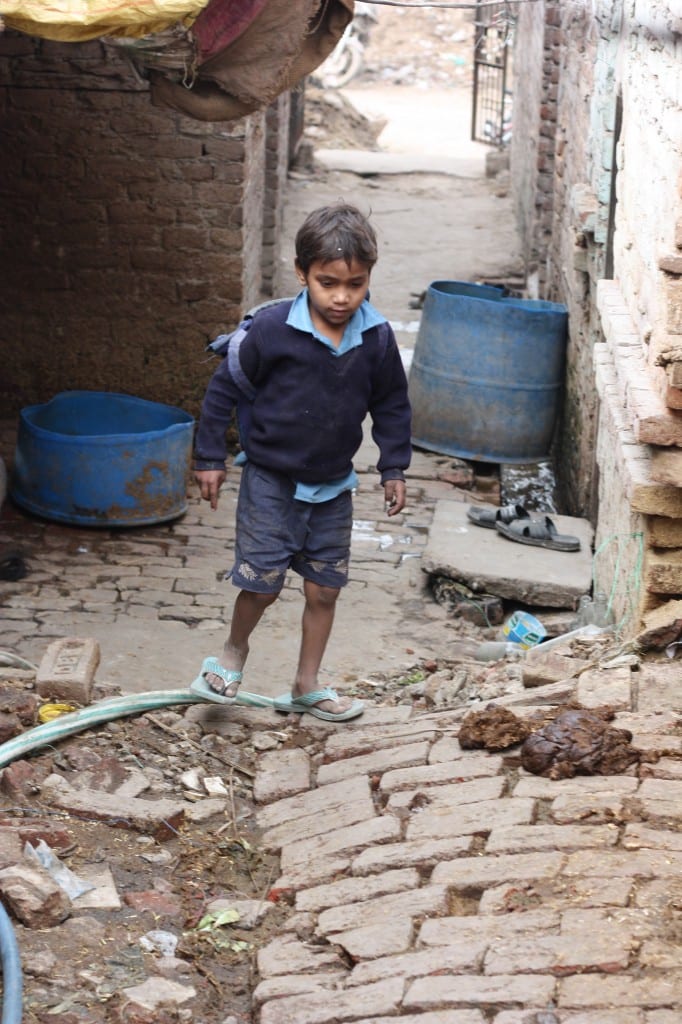
child rag picker arriving at the school
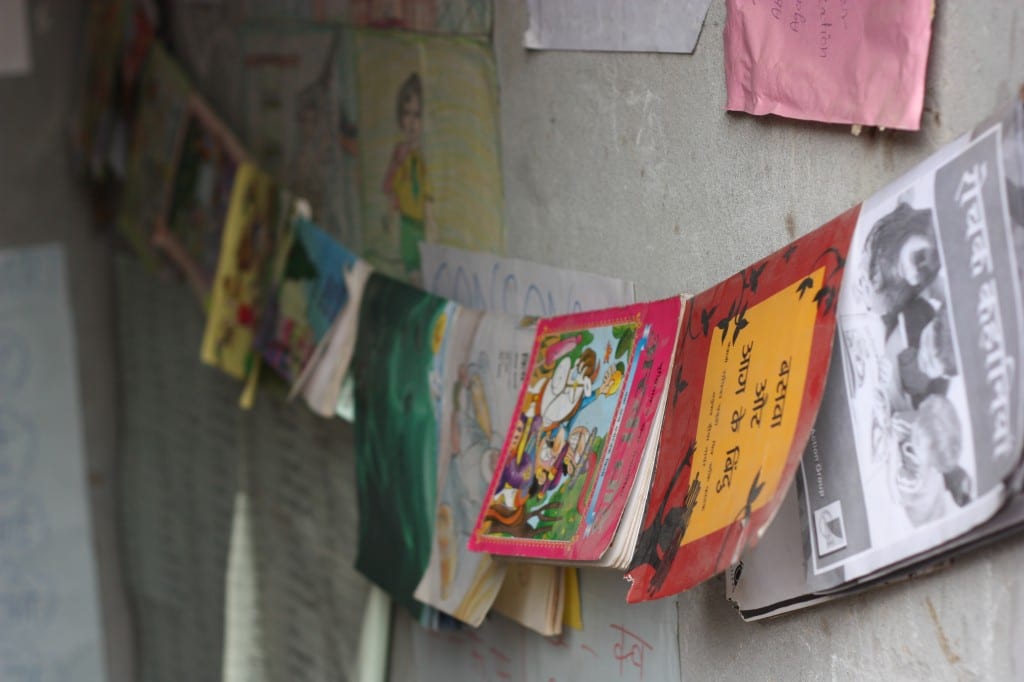
classroom
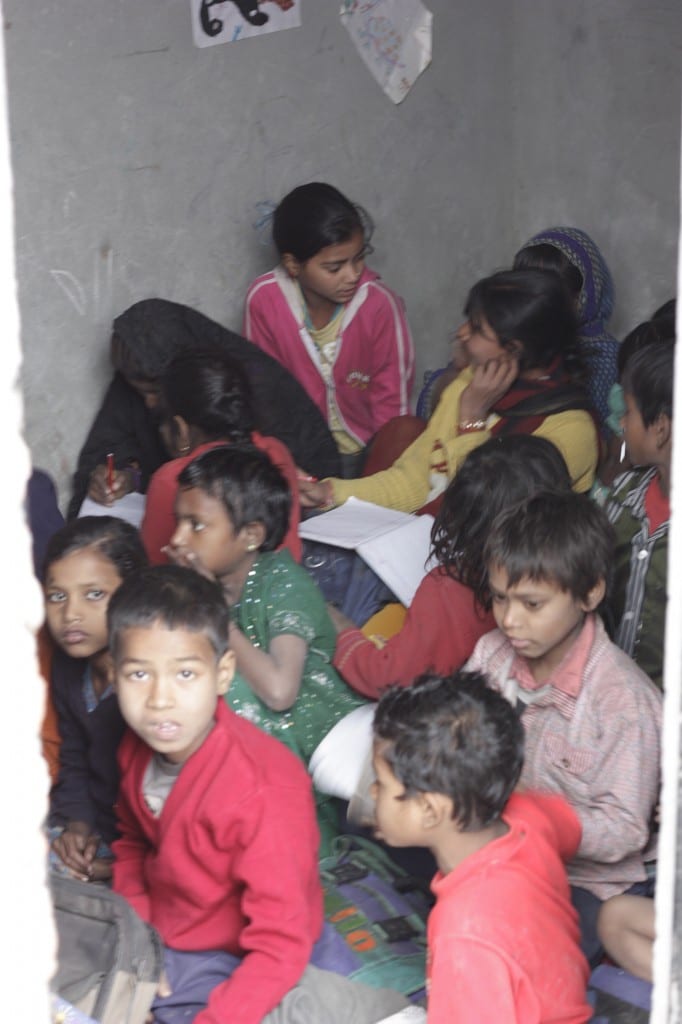
children in their classroom
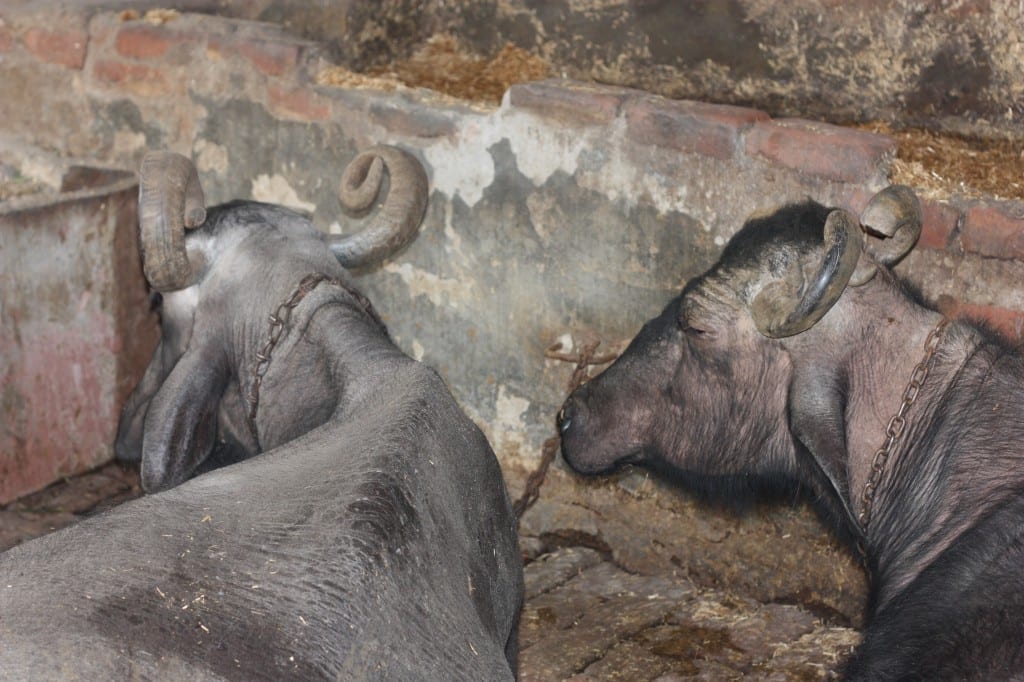
the 'schoolyard'
I was introduced to the children and the teachers. School runs twice a day in addition to the public school. The idea is to give waste picker children some extra help. School times are fitted so that children can still work (even though this is not supported by Chintan) and earn some money. All the children have to do to be allowed to attend school, is to wash themselves after work. This in itself has turned out to be a vital routine as, according to Chintan, especially younger children are now much cleaner as they used to be. Chintan’s additional school gives those children a better start in life as it teaches them the basic skill of reading/writing, maths and English. This means that they are empowered and, in this way, they become obviously far less likely to be exploited later in their lives.
All the children were really happy to be at school. They seem to appreciate the opportunity a lot and school brings a routine into their lives. It also gives a time during the day when they can ‘just be children’. Many of them have made a lot of progress since they’ve started and are becoming increasingly eager for more education.
It was now time to move on to the second school in the area that is also funded by Chintan. I was told that this school was ‘inside’. Only after some time did I realise that ‘inside’ actually means “in the middle of the waste pickers’ community”, as would the political correct version. But to be frank, the way to really name it is ‘in the middle of a slum’. I have no other words to describe this. The actual school is also a shanty but functions exactly like the other school (in fact – believe it or not – it is more spacious).
Here are again some pictures, which illustrate all I have witnessed much better than I can describe.
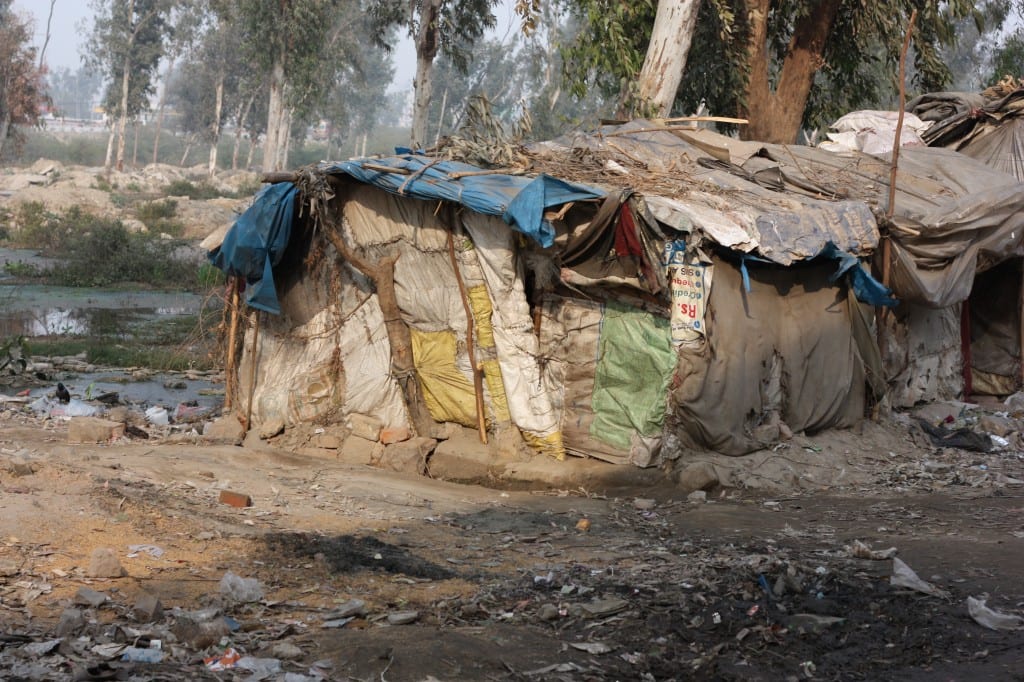
housing
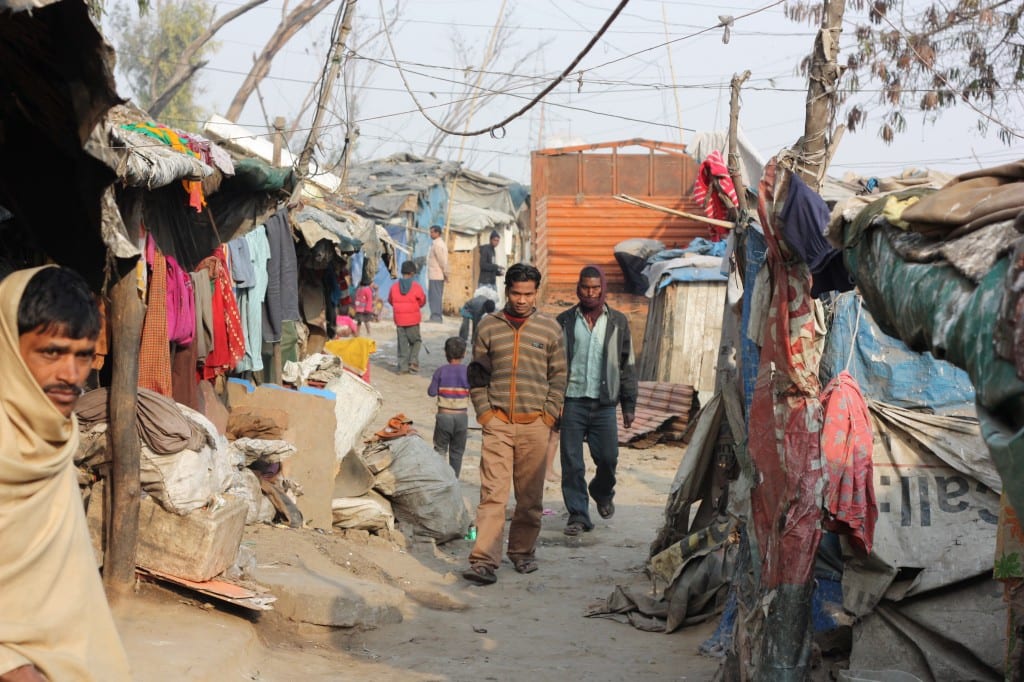
waste picker community
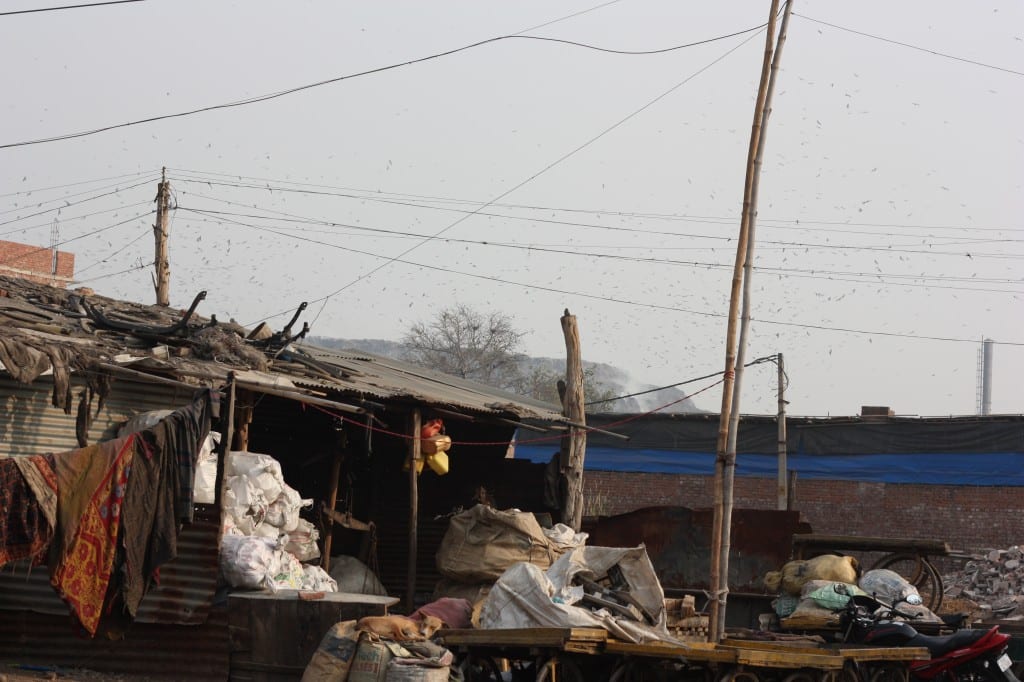
waste picker community - smoky landfill in the background
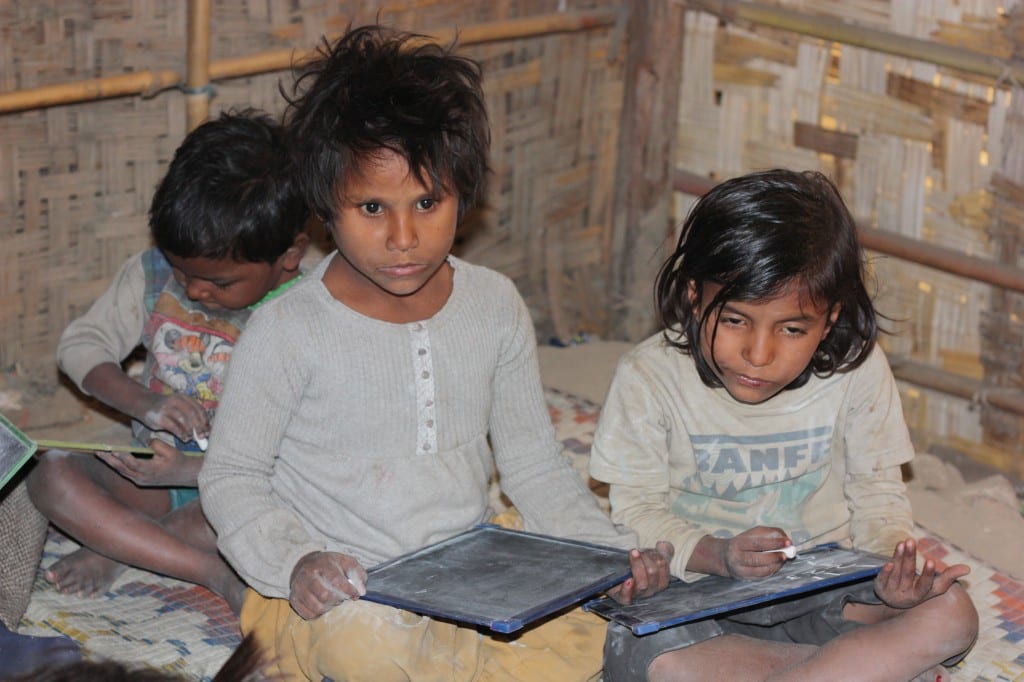
inside the school
Overall, the area is once more an area of a lot of contrast. On the one side there is the rag pickers’ community. Behind that is a huge landfill i.e. a mountain (in the true meaning of the word) of waste. As you can see in the pictures, all sorts of birds circle over it, probably looking for some food. This mountain, like an active volcano, releases fumes, which are probably toxic. It is here where the waste pickers are day-by-day looking to find recyclable wastes that they can sell on. Apparently, last year, they uncovered a dead body. What more can I say?
On the other side of the shanties is a governmentally planned colony. Houses are in a tiptop condition and one even gets the impression that some of the people who live here are relatively wealthy. So, by walking a few hundred yards, you step from one world into another. My journey took me past the badly built brick houses of the scrap dealers, many of whom were dealing with e-waste (the area’s main ‘produce’), through the slum where the waste pickers live into a wealthier area with a nice public school.
It’s been an experience that I could not quite believe, even though I have seen everything I’ve described to you with my own eyes. When I walked trough the slum, I felt like being in a bad dream… Fortunately, for me I could ‘wake up’ and go back home, have a warm meal and a hot shower. For those people who live there, this is quite different however. It is their reality. It’s in a place like this where many of them were born and most of them will die.









